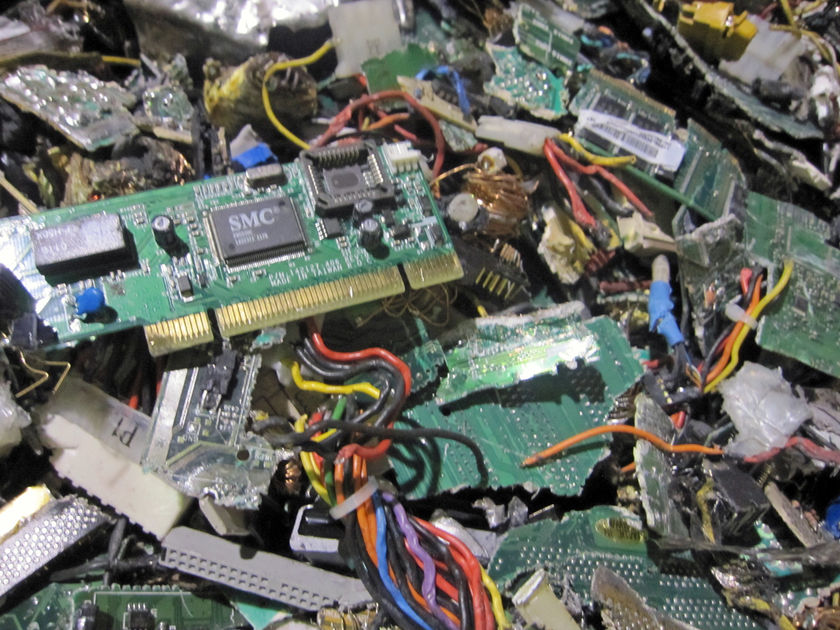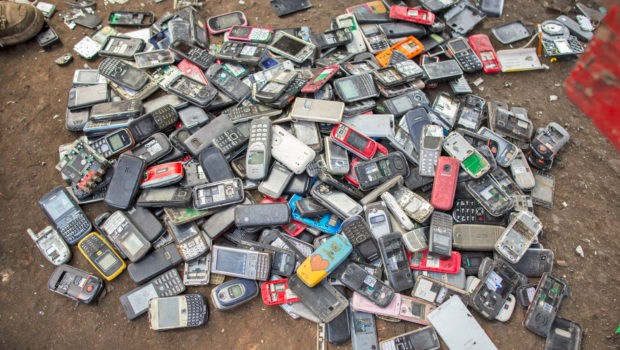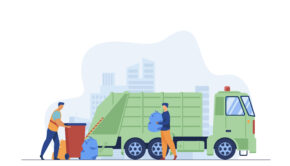How to Sustainably Dispose of Technology
In the West, our lives revolve around the handheld computers in our back pockets. We are aware of our device’s location at all times of the day until they break. Once the technology becomes ineffective, we place it in a junk drawer, a storage shed, or the trash.
If you look at the back of your phone, laptop, TV, or other devices, you may notice small silver symbols. One of those symbols projects a garbage can with an “X” in front of it.
If we cannot throw away our phones, and feel forced to purchase a new one every few years, where are all of the old phones going? They contribute to an environmental issue known as e-waste.

What Is E-waste?
E-waste is the accumulation of electronic devices at the end of their life cycle. Many of these items can engage in a second life, and consumers fail to acknowledge their sustainable disposal options. The improper disposal of e-waste may contribute to a significant environmental issue.
When companies mismanage these devices, they can produce toxic waste. The emissions affect the water, air, and land near the disposal site. If regions experience e-waste contamination, leading to the release of hazardous toxins, outside companies may need to intervene. They will need to safely remove and transport materials off and away from the disposal area.
The world disposes of 50 million metric tons of e-waste annually. Many of these devices go to recycling facilities in developing countries. These businesses extract the precious metals present in everyday technological gadgets.
Unfortunately, many recycling companies unsafely and unethically remove metals from the devices, risking their health and the environment. They only recycle about 10% of these materials. They sell the remaining portions for a profit.
Sustainable Solutions
Fortunately, we can change our environmentally degrading patterns and adopt more sustainable practices. You can repair, recycle, and resell your old gadgets to reduce the waste associated with their disposal. These alternate disposal methods protect the planet against toxic pollution.
Repair
Many tech companies persuade their customers to buy the new version of their devices each year. If your devices are malfunctioning or broken, you may want to throw that gadget away and start fresh with a new version. This norm may increase the environmental degradation produced by the tech industry.
Instead of turning to a new device when yours breaks, you can always repair the damage. A Massachusetts movement, called Right to Repair, allows users to fix their own gadgets. Your telecommunication provider may not conduct repairs, and outside repair companies can be expensive or use inauthentic parts.
To effectively repair your device for a reasonable price, Right to Repair developed a method of accessing the tools and tutorials necessary to make your own alterations.
Recycle
To reduce e-waste and limit outsourcing, you can recycle your old gadgets. Many electronics companies, like Apple, have recycling programs. You can mail them your devices after they break or are no longer in use, and they will recycle them for you.
Before throwing your gadget into the junk drawer, hop online and evaluate the company’s recycling program. Ensure the company recycles their products in the U.S. and works in accordance with safety guidelines and regulations.
Resell
Thrifting is a popular shopping option for the sustainable consumer. Why wouldn’t we treat our gadgets the same way we treat our old sweaters? Various online resale sites allow you to find customers for your old products.
Poshmark, eBay, and Facebook Marketplace are accessible resources to utilize when reselling your technology. This process can reduce harmful waste, free up room in your home, and prevent pollution.
Where to Start
You may start by evaluating the condition of your old device. If it’s in good condition and you are upgrading your device, try and sell it to a friend or family member. Reselling your devices on the internet is effective. Just remember that the customer may live far away, and shipping can contribute to transportation emissions.
Selling your goods to a nearby customer increases the sustainability of your transaction and gives your castoff items a new lease on life.















